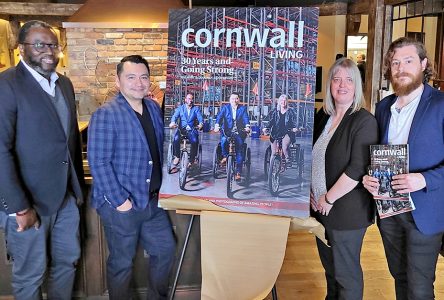(Article adapted from July 8, 2022 article in Passive House Canada)
Jeremiah Point P.Eng., LEED AP, is the owner of Point Engineering, a company based in the Territory of Akwesasne. As a proud Akwesasro:non, Point incorporates new technology with traditional values. A Passive House certified designer and Director on the Passive House Board since 2020, he is committed to promoting the Passive House Standard to all his clients.
How did you become aware of Passive House?
I went to the BuildEX in Toronto in 2017 and Passive House Canada was doing a few different talks right next to our booth. I didn’t really pay much attention to it at the time, but afterward, I looked into it a little more. That’s what got me started.
The evolution of buildings is going to get us to the Passivhaus-level eventually. It’s just a matter of time. I saw Passivhaus as the natural progression of buildings, and I needed to be informed and involved and educated on what’s to come next – it’s ‘future-proofing’ my career.
How successful have you been at convincing people that Passive House is the future of building?
It’s been almost four years now that I’ve been pushing Passive House in my community and to everyone I meet in the building industry. Any project that I’m on, I’m talking to the general contractors, the architects, the builders and I keep pushing them.
At my recent presentation to the Ontario Architects Association (OAA), one of the discussions was about energy modelling, which has always been a question for the mechanical engineers after the building was designed. One of the questions that I had in the presentation was, how do we shift that back to architects? Because it really needs to start from ‘day one.’
We also need to stop using the excuse of a few percent points on the capital budget costs to spend the other 90 per cent on operating and heating and cooling costs. When you look at the total cost of the building over time, Passive House is going to be cheaper every single time.
There’s a shift that’s happening, and we’re in this transition period. Buildings have been evolving. Today we look at buildings from only 50 years ago and we’re like, that was insane. What were we thinking?
One or two generations from now, when we look at the buildings today that meet building code, they are going to be saying the same thing – that we were insane. And we already know it’s insanity. I don’t want to be a person who builds a building and 25 years from now, someone looks at it and says, ‘that’s garbage.’ I don’t want to be associated with that.
It’s the people who aren’t convinced who need to be reached. We have a whole Passive House community that’s growing exponentially, especially in Ontario. They’re already convinced. We need to be preaching more to building code officials, to people who are establishing the budgets, especially municipalities where they’re looking at operating budgets.
I was connected with the Housing Department here in Cornwall for low-income rental housing. When I introduced them to Passive House, I told them if you build it Passivhaus, you could make it profitable. The first one [they build] will not be Passive, but the next one, they want it to be Passive. Every municipality is going through that same awakening. And if we can’t get the provincial building code to do it, then we need to just get people to exceed the building codes.
In the past, you have made statements comparing traditional Indigenous dwellings and Passive House. Can you elaborate on that?
Every Indigenous Peoples around the world found a way to live in their climates without the need for energy. They all found a way, and that’s why their housing styles are so different.
That’s what resonated with me when I took the Passive House training. I was shown a picture of a high-rise multi-unit dwelling, I thought: It’s a vertical longhouse. My ancestors lived in longhouses with 200-300 people under one bark structure and they were warm all winter long, just from the body heat. It works, and it worked for thousands of years. Now we just need to recreate that.
Every part of the building sector needs to be bombarded with this knowledge. We already see it on the west coast, in Vancouver and Victoria where the market is saturated. And now it’s shifting to Ontario, where they are going through the same growing pains that BC did.
We needed to do it 30 years ago. Passive House should have happened a long time ago. They say the best time to plant a tree is 20 years ago. Well, the second-best time is today.



